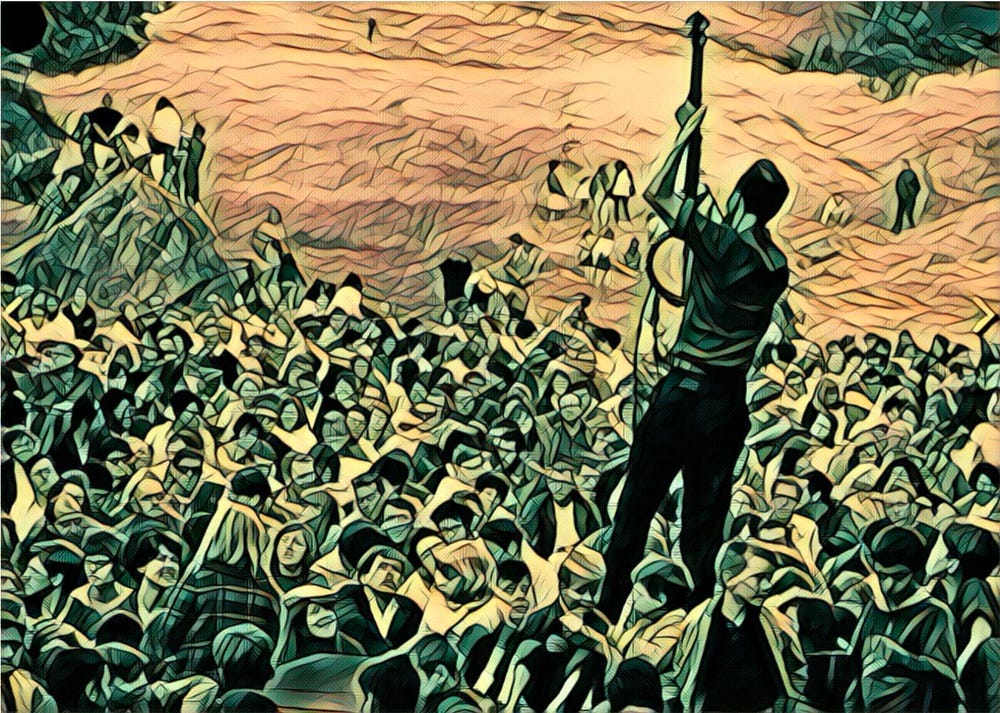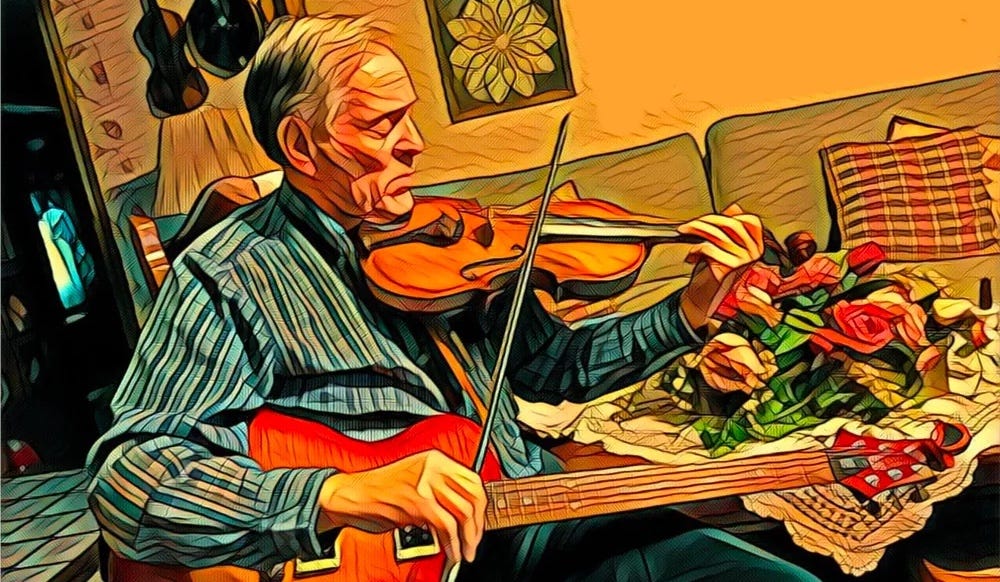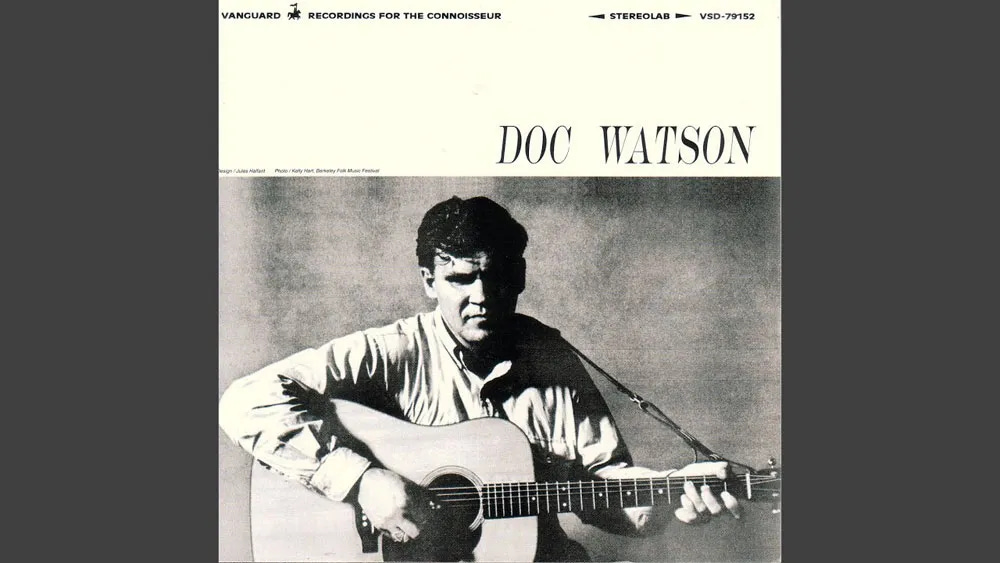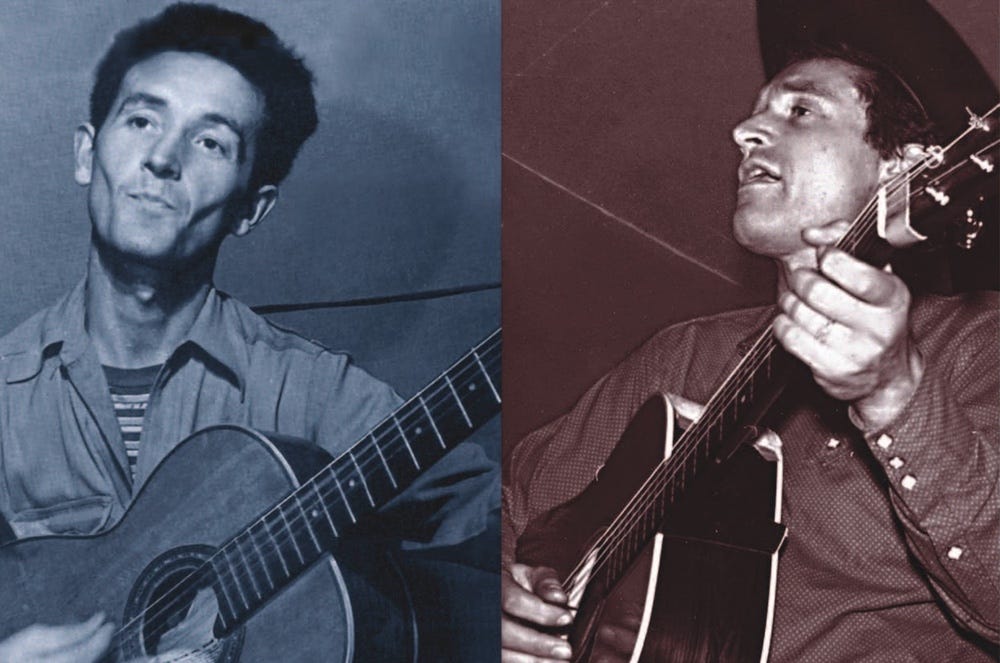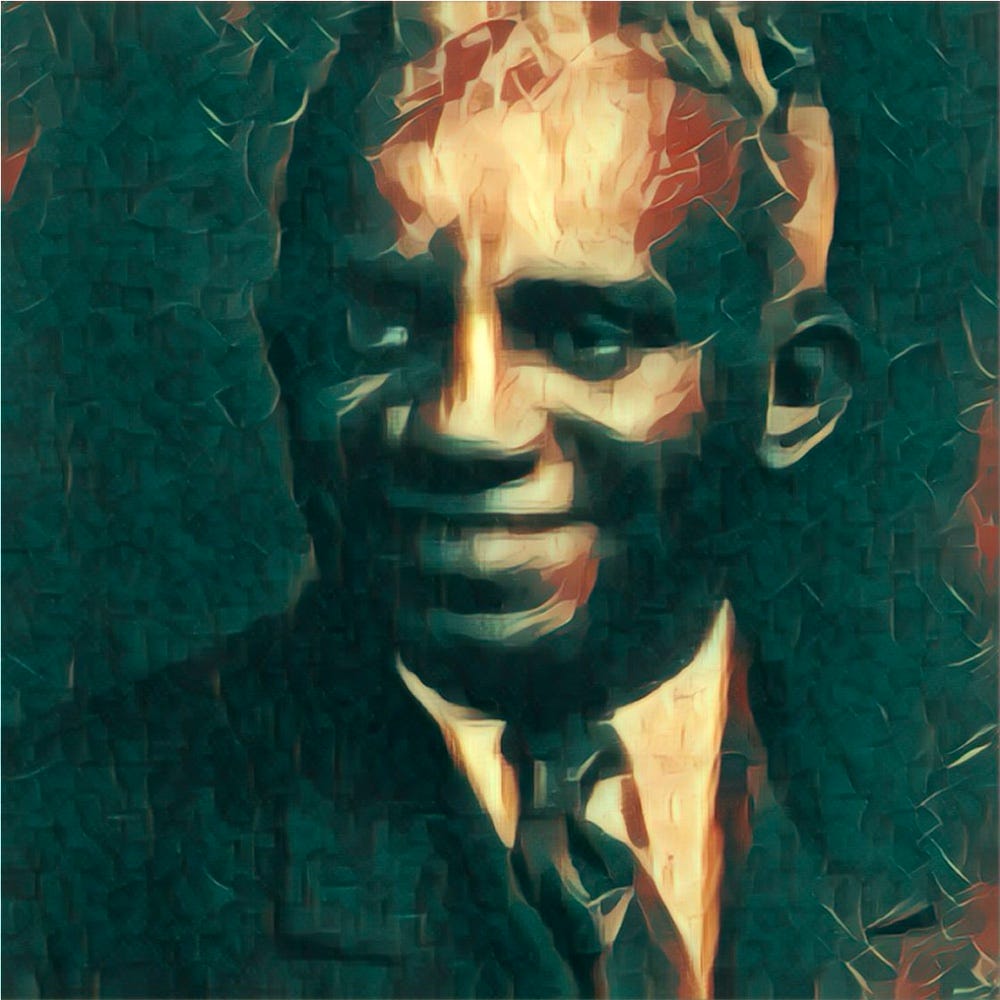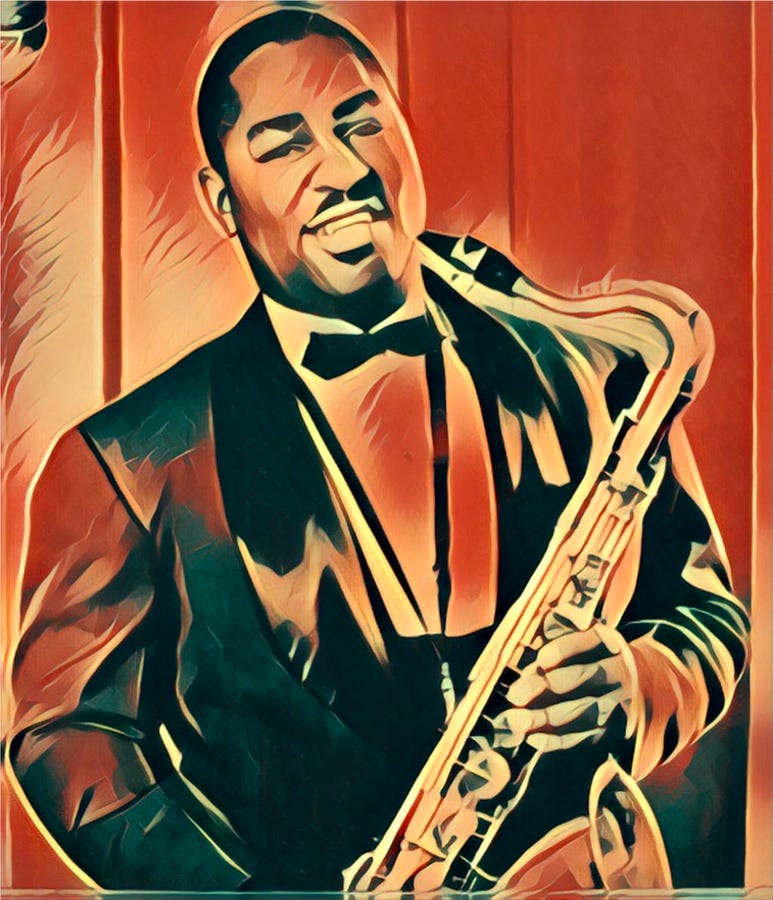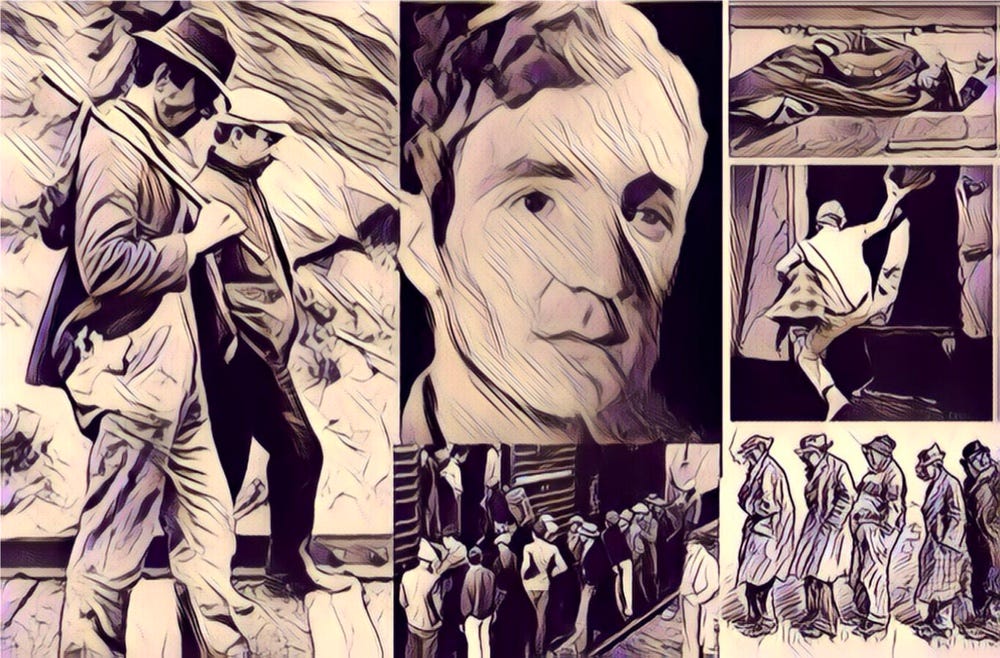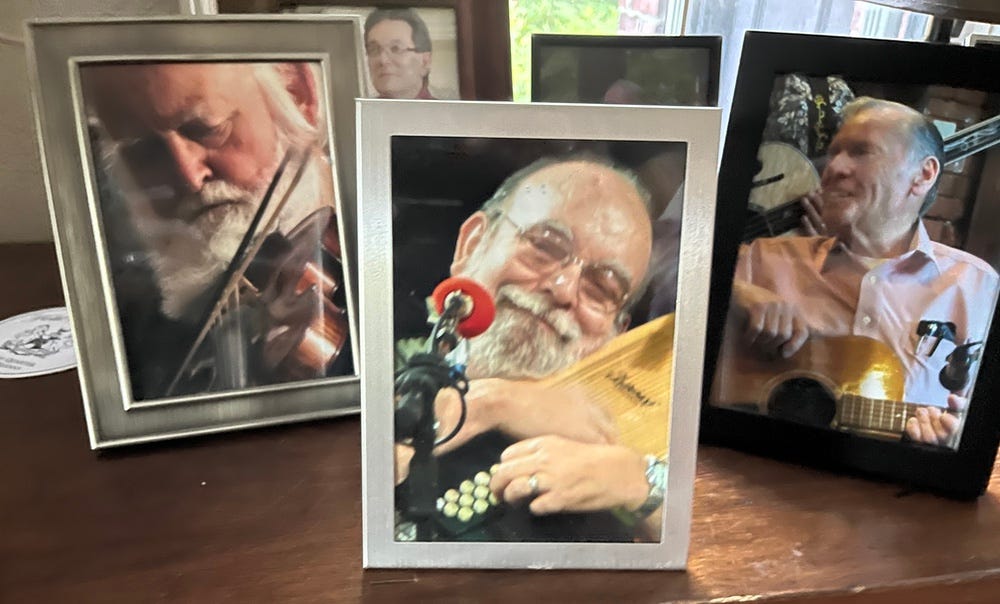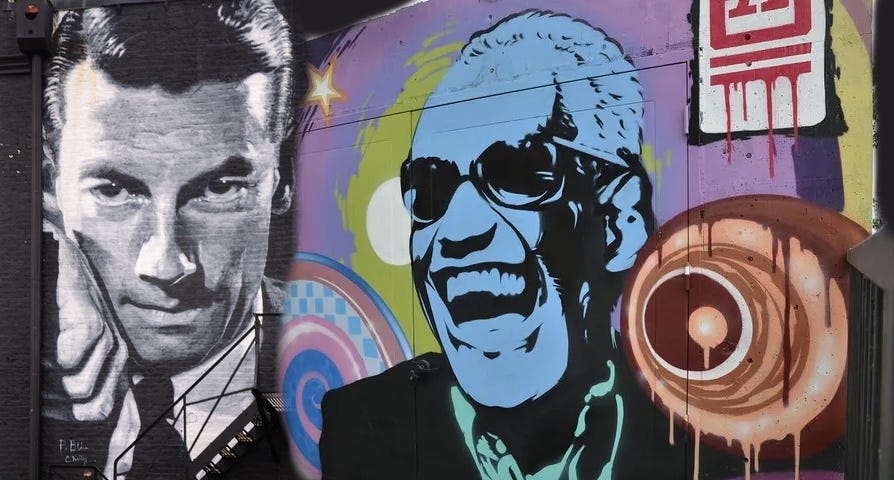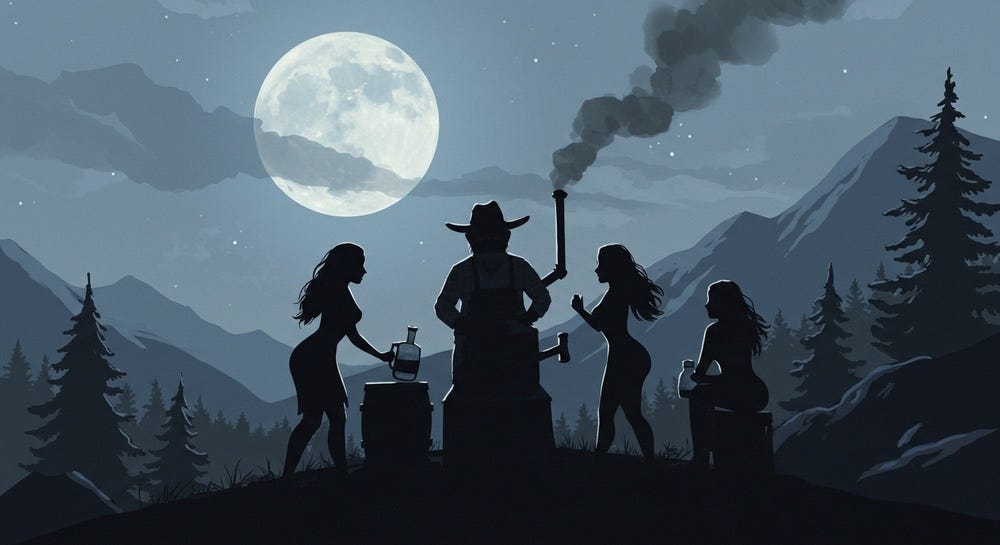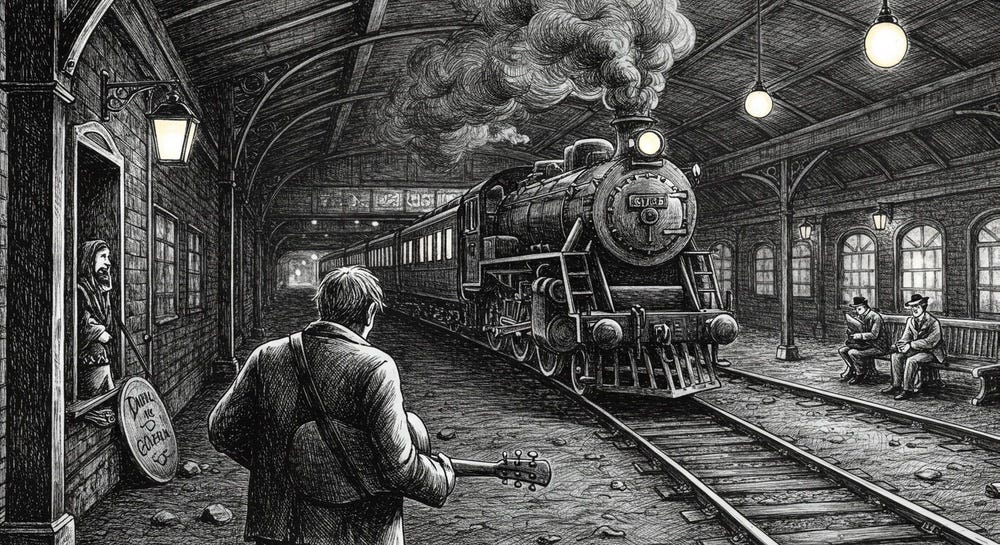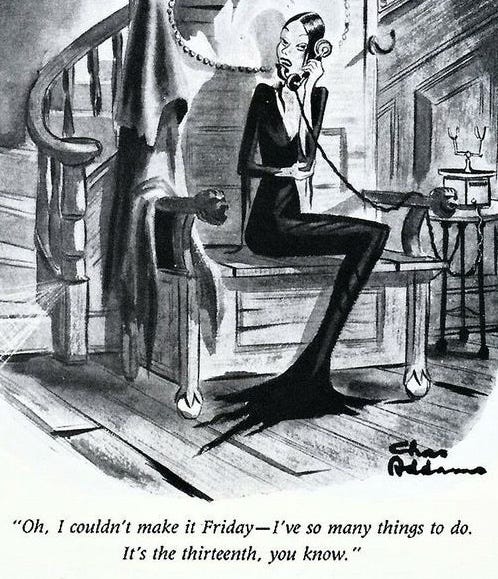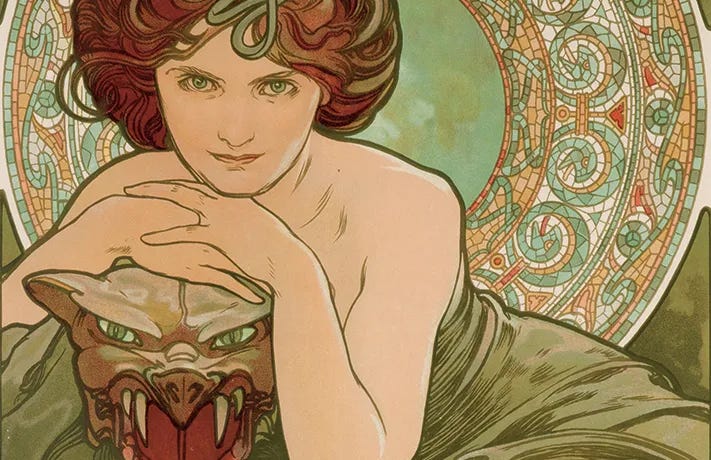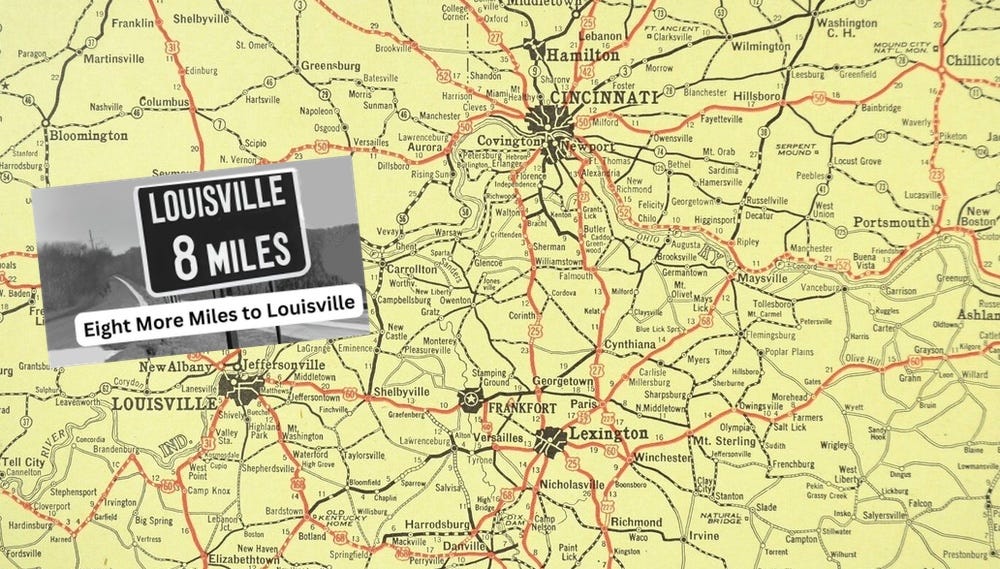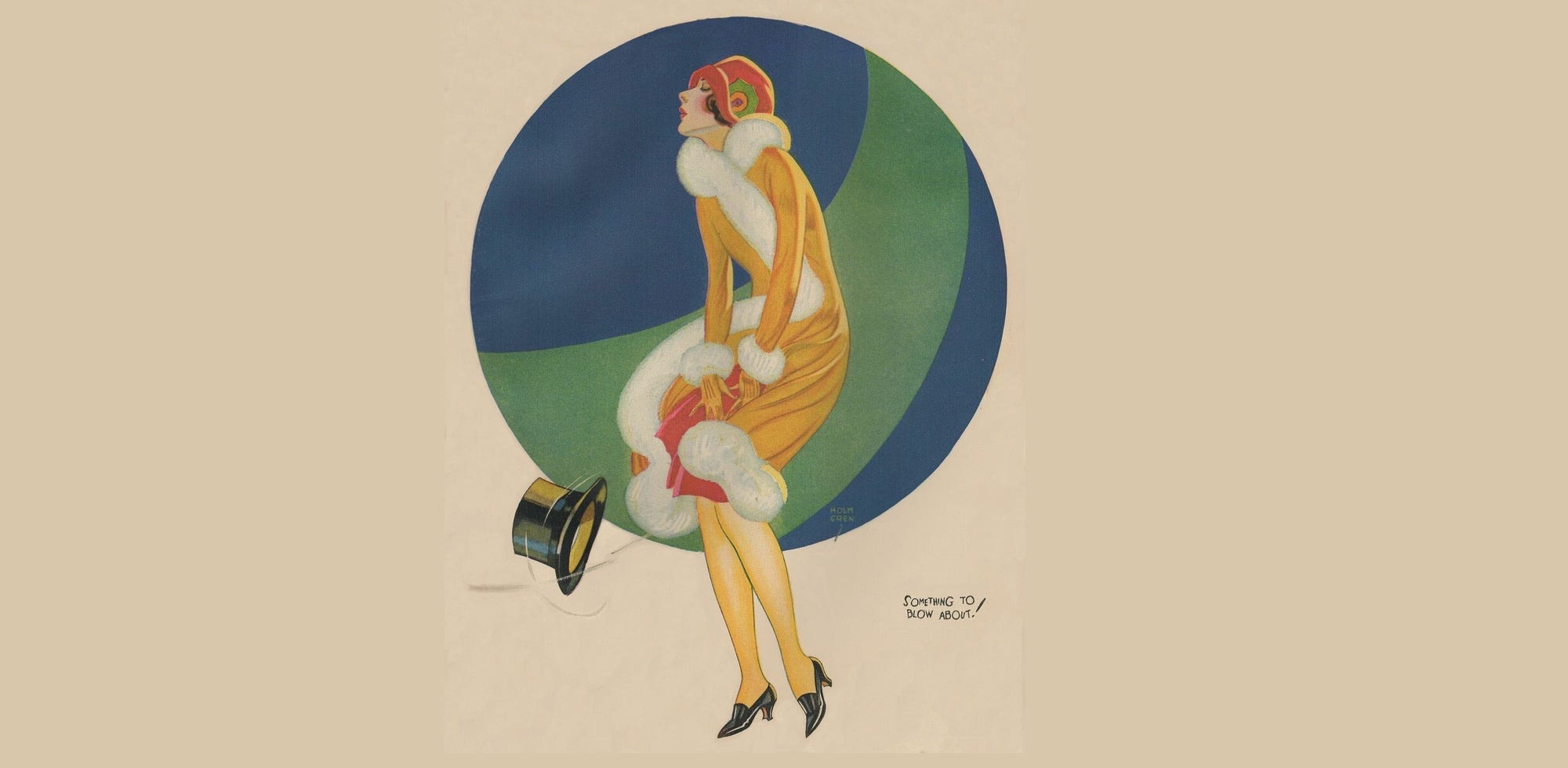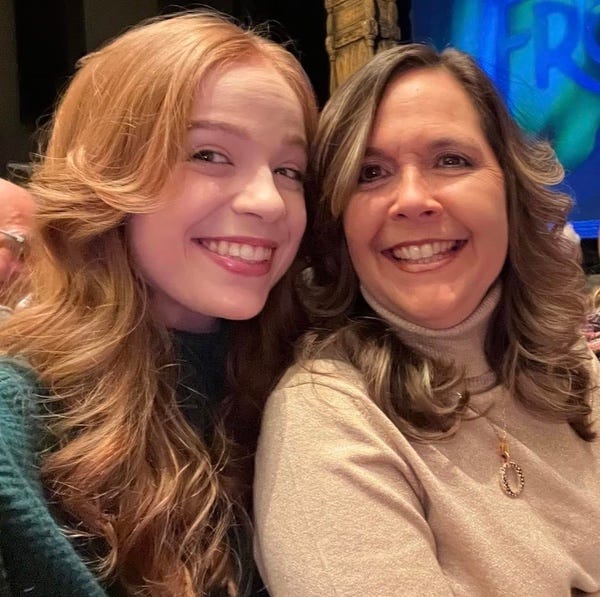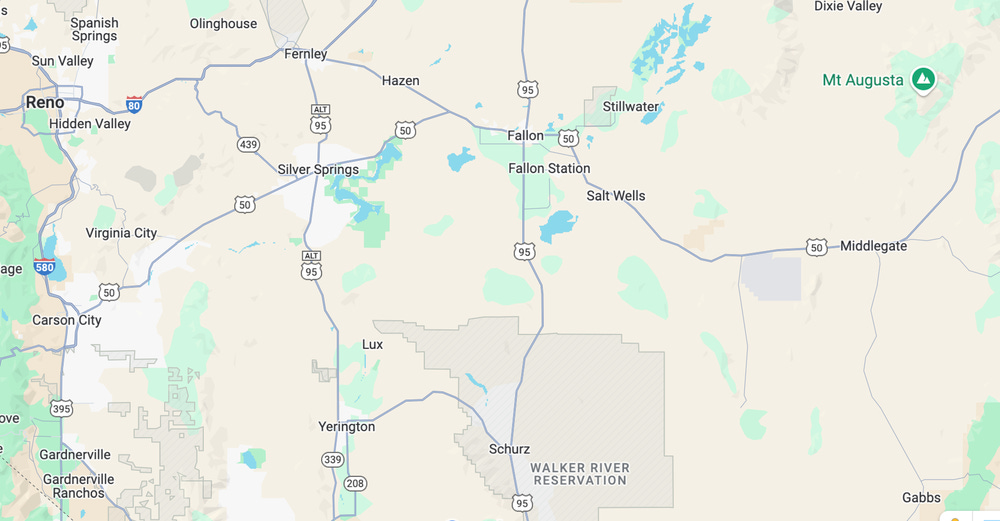Discover The 1937 Flood Watch Podcast
The 1937 Flood Watch Podcast

The 1937 Flood Watch Podcast
Author: Charles Bowen
Subscribed: 0Played: 1Subscribe
Share
© Charles Bowen
Description
Each week The 1937 Flood, West Virginia's most eclectic string band, offers a free tune from a recent rehearsal, show or jam session. Music styles range from blues and jazz to folk, hokum, ballad and old-time. All the podcasts, dating back to 2008, are archived on our website; you and use the archive for free at:
http://1937flood.com/pages/bb-podcastarchives.html
1937flood.substack.com
http://1937flood.com/pages/bb-podcastarchives.html
1937flood.substack.com
230 Episodes
Reverse
Danny Cox has an abiding love for the works of guitar heroes Jerry Reed and Chet Atkins, and the song “Drive In” — which Dan brings to this week’s podcast from a recent rehearsal — beautifully displays those intersecting energies.As reported here earlier, Reed often wrote wonderfully tasty riffs and licks only to forget them the next day when he moved on to some new project. Atkins, a detail-driven professional and a successful producer, completed and recorded many of Jerry’s pieces, practicing and polishing them to perfection.It was one of these fertile periods of Jerry’s noodling and Chet’s cultivating that produced “Drive In.” Chet was the first to record the piece, the opening track of his acclaimed 1968 Solo Flights album.Later John McClellan’s book Chet Atkins in Three Dimensions: 50 Years of Legendary Guitar included a transcription of the tune, further cementing its place in Chet’s legacy repertoire. It’s no wonder that these days that the song is a popular vehicle for aspiring pickers on YouTube.More from Danny?If all this has you in the mood to put a little more Danny Cox into your Flood Friday, drop by the free Radio Floodango music streaming service and give the Danny Channel a spin.Click here to check it out! This is a public episode. If you would like to discuss this with other subscribers or get access to bonus episodes, visit 1937flood.substack.com
The sing-along — “if you know it, sing it!” as we say around here — is fundamental to folk music. As folk music’s guiding spirit, the late Pete Seeger, once said, “I rather put songs on people’s lips than in their ears.” Pete believed songs offered powerful magic to bring unity. “Get people to sing together,” he said, “and they’ll act together too.”“Once upon a time,” he said, “wasn’t singing a part of everyday life as much as talking, physical exercise and religion? Our distant ancestors, wherever they were in this world, sang while pounding grain, paddling canoes or walking long journeys. Can we begin to make our lives once more all of a piece?”We love how Seeger broke that idea down.“Finding the right songs and singing them over and over is a way to start. And when one person taps out a beat, while another leads into the melody, or when three people discover a harmony they never knew existed, or a crowd joins in on a chorus as though to raise the ceiling a few feet higher, then they also know there is hope for the world.” “I’ve often thought,” Pete said, “standing onstage with 1,000 people in front of me, that somebody over on my right had a great-great grandfather who was trying to kill the great-great grandfather of somebody off to my left. And here we are all singing together... Gives you hope.”About This SongFor us nowadays, there’s no better sing-along than this tune, which the newest Floodster Jack Nuckols brought us about a year ago, a song that stars the beautiful Ohio, which rolls and flows beside our towns and through our hearts.The song “Shawneetown” is a wonderful reflection on the early history of boating up and down the Ohio River. While it sounds like an old tune, it is largely a 1970s composition by folk artist Dillon Bustin.As we reported here earlier, Bustin based the first verse and chorus on historical fragments published in 1828 and quoted in Leland D. Baldwin’s 1941 book, The Keelboat Age on Western Waters, including: Some rows up, but we rows down, All the way to Shawneetown, Pull away — pull away!Bustin, who combined these fragments, composed the tune and several additional verses for the song we have now. Shawneetown is in southern Illinois where the Ohio meets the Wabash River. It was the first Anglo settlement on the Ohio, serving as a major trade center and a government administrative center for the Northwest Territory in the early 19th century. Keelboats were the most efficient commercial vessels of the time.The song’s first studio recording was likely the 1978 rendering by American folk duo Malcolm Dalglish and Grey Larsen. It appeared on their First of Autumn album.For more history of this good old tune, see this earlier Flood Watch article.And Even More Song HistoriesAnd speaking of song histories, we have back stories on more than 200 of the tunes we play.Check out Flood Watch’s free Song Stories section and click on a title to see what we have on file about it. You can browse them alphabetically by song titles or chronologically by the years in which they were written. Click here to give it a look. This is a public episode. If you would like to discuss this with other subscribers or get access to bonus episodes, visit 1937flood.substack.com
In his quarter century with The Flood, the late Doug Chaffin brought dozens of great tunes to the band, and the loveliest of the bunch was one of the last.The truth is we always listened to everything Doug told us, because his musical instincts were usually right on the money. For instance, whenever we were playing a show and Doug leaned over and whispered, “Hey, maybe we oughta do this song next,” Charlie Bowen revised the set list on the fly, because Doug had a sixth sense about what people would like to hear. That’s why a half dozen years ago, when Doug told us we ought to learn “Amelia’s Waltz,” we perked up. The song ended up being one of the sweetest tracks on our 2019 Speechless album, as you can hear in the video above.The piece you hear sounds like an old tune, but it actually was written in 1981 by Bob McQuillen, the late New Hampshire composer, who penned it in honor of the then-three-and-a-half year-old daughter of a friend and fellow musician, a woman named Deana Stiles.“Amelia’s Waltz” is one of those sweeping melody that sounds like it ought to be the soundtrack of a big, lush movie. And it turns out that the plot of such a movie could easily be based on the tune’s very namesake.So, Who is Amelia?Considered the dean of contra band music in America, the late Bob McQuillen — “Mac” to his friends — wrote some 1,300 tunes in his 60 years of playing. Most of his compositions he named after people or events in his New England life, and the song named “Amelia’sWaltz” is one of his best.Besides having a gorgeous song named for her, Amelia Stiles’ other claim to fame is that she was born in a New England curiosity, a structure called “The Lindbergh Crate,” and…. well, heck, let’s let Mac himself tell that tale. A few years before his death in 2014 at age 90, McQuillen was interviewed by a Danish fiddle website about the back story of “Amelia’s Waltz” and here’s what he told them.“This is sort of complicated,” he began. “After Charles Lindbergh flew across the ocean in the Spirit of St. Louis, the thing was to get the plane back. They took the wings off and put them in one crate and the fuselage in another, then sent the whole thing back to this country aboard ship. “I don’t know where the wings box went, but the fuselage crate eventually wound up on the banks of the Black Water River in Contoocook, a little town in New Hampshire.” Later, someone added a slanted roof to the crate and turned it into a little cabin in pretty little spot in the piney woods.“Now along comes Deanna Stiles,” Mac continued, “and she lives in this thing for a while. She also develops a fondness for some dude and out of that we get the emergence of a cute little baby girl, who, because this was Lindbergh’s crate, was named Amelia (after Amelia Earhart). About three years or so after that was when I decided that Amelia ought to have a tune. And that’s how it all happened.”The earliest recording of the tune we’ve found is John McCutcheon's 1982 release on his Fine Times at Our House album for Greenhays.And Whither the Crate?Meanwhile, The Lindbergh Crate has had a moving history of its own (with the accent on the moving….)Its modern chapter began in 1990, when history lover Larry Ross purchased the structure from David Price of Contoocook. Price had received higher offers, but Ross convinced him to sell the crate for $3,000 when he explained his vision to use it as a museum and an educational tool for children. Ross brought the crate from New Hampshire to his property in Canaan, Maine.There, Ross restored the 290-square-foot crate in his backyard, adding a new roof, porches, doors and windows, transforming it into the Lindbergh Crate Museum. Inside, he displayed donated Lindbergh memorabilia, including a bust, letters, tapestries and photographs.For 30 years, Ross hosted an annual “Lindbergh Crate Day” for the community, but during the Covid pandemic, he decided it was time to downsize and sought a new home for the crate. He connected with Morrill Worcester, founder of Wreaths Across America, whom Ross had previously invited to Lindbergh Crate Day. Ross felt Worcester’s location in Columbia Falls, Maine, was suitable because the nonprofit’s mission—”remember, honor, teach”— aligned with the crate’s educational purpose.The Lindbergh Crate was shipped in October 2020 from Canaan and arrived safely at the Wreaths Across America Museum in Columbia Falls. Last year it was moved again to nearby Jonesboro, Maine, where it has been restored by the Worcester family. This is a public episode. If you would like to discuss this with other subscribers or get access to bonus episodes, visit 1937flood.substack.com
Danny Cox and Randy Hamilton brought us this tune a year or so ago and as it matures, it just keeps enriching The Flood’s bloodstream.Not only that, the song is very much on target to be included on the next Flood album when work begins on that project in the months ahead. Give it a listen in this take from a recent rehearsal.About the SongAs noted in an earlier Flood Watch article, “Deep River Blues” is usually associated with the late, great Doc Watson, who included it on his self-titled debut Vanguard Records album back in 1964. The song became so connected to Doc over the years, in fact, that many fans thought it was original with him.However, as we noted, Doc was just 10 years old in 1933 (he was still “Arthel” to his North Carolina family in those early days) when Alabama’s Delmore Brothers released their Victor recording of “I Got The Big River Blues.”Still thinking about that performance 30 years later when he hit the recording studio, Doc fashioned his famed rendition as he thought his hero guitarist Merle Travis would play it, with a heavy emphasis on the thumb thumping out a driving bass line. In the latest Flood rendition, Danny beautifully carries on that tradition.Turn Your (Flood) Radio On!Want to spice up your Friday with a little more from Randy and Danny? The free Radio Floodango music streaming feature has got you covered with randomized playlists of tunes featuring each of them.Click on the graphic above to zip right to the Randy Channel or on the graphic below to give Danny a spin! This is a public episode. If you would like to discuss this with other subscribers or get access to bonus episodes, visit 1937flood.substack.com
Brooklyn-born Elliott Charles Adnopoz had only just started calling himself “Ramblin’ Jack” in the early 1950s when he came upon a new hero in the wilds of San Francisco.This was a couple years after Elliott had met in his first and most influential mentor — the legendary singer/songwriter/poet Woody Guthrie — whose work and philosophy would shape the 20-something Jack’s long life as an itinerant folksinger.Enter Lone CatA few years after Woody, Elliott rambled all the way across the country and met an extraordinary 60-year-old one-man band by the name of Jesse “Lone Cat” Fuller who was playing on the streets and in the coffeehouses of California’s Bay Area.Jesse, taking a liking to the eager young wanderer, personally taught Jack his best composition — “San Francisco Bay Blues” — just a few years after he had written and recorded it himself.To this day, Jack Elliott — who just last month turned 94 and is still traveling and performing — makes Fuller’s tune a centerpiece in his set list, often introducing it with stories about the song's creator.As the first performer to cover the tune after Fuller’s original recording, Elliott included the song on his 1958 album, Jack Takes the Floor. That track played a crucial role in popularizing “San Francisco Bay Blues” during the burgeoning folk revival of the 1960s. After Jack’s take, the tune entered the canon of many an up-and-coming trouper, from Tom Rush to Richie Havens to Peter, Paul and Mary.Since then, the song has had an extraordinarily diverse number of covers, by Bob Dylan and Jim Kweskin, by Jim Croce and The Weavers, by Hot Tuna and Janis Joplin.Even The Beatles faked a version of it during the Get Back/Let it Be sessions on Jan. 14, 1969. Later John Lennon recorded an unreleased version during his Imagine sessions in May 1971, while McCartney performed it often during his solo concerts in San Francisco. It is still played frequently at Paul’s soundchecks around the world.Eric Clapton performed the song on MTV Unplugged in 1992 during the taping in England. The live album earned six Grammy Awards, including Album of the Year. How Jack Began to RambleBack to Jack, Elliott's life took many turns before he embraced music. Born in New York in 1931, Jack grew up in a family that hoped he would follow his father’s example and go into medicine.But young Elliott was captivated by rodeos and the cowboy life, attending events at Madison Square Garden. At just 15, he rebelled. Running away from home, he joined Colonel Jim Eskew's Rodeo, a journey that took him across the Mid-Atlantic states.Though his rodeo stint lasted only three months, the experience was formative. After he learned guitar and some banjo from a singing cowboy rodeo clown named Brahmer Rogers, Jack was on the path to a music career.Back in Brooklyn, he polished his guitar playing and then started busking for a living. It was just a little later that Jack became a devoted student and admirer of famed folkie Woody Guthrie. Elliott even lived in the Guthrie home for two years.Jack absorbed Guthrie's style of playing and singing so well that Woody himself once remarked, "He sounds more like me than I do."About That NameOne story about Jack is that his iconic nickname didn’t relate so much to his wanderlust as to his storytelling acumen.The late folk singer Odetta always contended that it was her mother who coined the name. "Oh, Jack Elliott,” she was said to have remarked, “yeah, he can sure ramble on!"Jack’s Musical OffspringIn the early 1960s, Elliott toured Britain and Europe with banjo-picking buddy Derroll Adams, recording several albums for Topic Records. In London, the two played small clubs and West End cabarets.Upon returning to the States a couple years later, Elliott found that his albums had preceded him. Suddenly, he had become something of an underground star in the nascent folk music scene around Greenwich Village. Now he was the mentor to newcomers, most notably to a 19-year-old Bob Dylan, who had just hit town. Bob came such a “Ramblin’ Jack” fixture that some started calling him “son of Jack.”Over the years, Jack influenced a generation of musicians, from Phil Ochs and Tom Rush to the Grateful Dead. In the UK, Paul McCartney, Elton John and Rod Stewart all have paid tribute to his style. But it took a few more decades for Elliott to finally get widespread recognition. His 1995 album, South Coast, earned him his first Grammy. In 1998, he received the National Medal of Arts from President Bill Clinton.His long life and career were chronicled in the 2000 documentary, The Ballad of Ramblin' Jack, directed and produced by his daughter, Aiyana Elliott.Back to the SongHonestly, we don’t remember when we first started doing Jesse Fuller’s “San Francisco Bay Blues.” It was back when we were youngsters at those good old folk music parties in the ‘60s. A decade later, the tune was firmly entrenched when The Flood came together. And we were still playing it in 2001 when we recorded our first album, on which it’s the closing track. That was a good call, because we often use this song to close out a show, since it gives everybody in the band one more solo before we call it a night, as you can hear in this take from last week’s rehearsal. This is a public episode. If you would like to discuss this with other subscribers or get access to bonus episodes, visit 1937flood.substack.com
Some newer immigrants to Floodlandia were surprised by last week’s article celebrating two West Virginia natives — Don Redmond and Chu Berry — who became legendary jazzmen.“I’m sorry,” one of the new friends confided, “but to me the idea of West Virginia conjures up fiddles and banjos. I’ve never thought of it for jazz.”He’s forgiven. Many don’t realize the Mountain State’s musical traditions are more diverse than stereotypes suggest.Meet MaceoIn fact, this year marks the 100th anniversary of the publication of one of the greatest jazz standards of all times, and it was written by an extraordinarily prolific West Virginian who was a major influence in 20th century music.Maceo Pinkard, born in Bluefield, WV, in 1897, the son of a coal miner and a school teacher, was educated at the Bluefield Colored Institute, class of 1913, and wrote his first major song — called “I’m Goin’ Back Home” — the following year. (Today Bluefield State University holds a festival each year to honor of its famous alumnus.)Pinkard wrote hundreds of tunes, including many for stage and screen, his greatest being “Sweet Georgia Brown,” which he published in March 1925. Yes, she might have been a sweet Georgia peach, she was mountain girl at heart. Click here for The Flood’s latest take on the tune from a recent rehearsal.As reported here earlier, the song that would top Maceo Pinkard’s obituary when he died in 1962 at age 65 was co-written with lyricist Ken Casey.Soon after “Sweet Georgia Brown” was composed, it was introduced to the dancing/singing/humming/whistling public by bandleader Ben Bernie. As that nationally known orchestra did much to popularize the number, Pinkard cut Bernie in for a share of the tune's royalties by giving him a co-writer credit. They both could have retired on the royalties.But Pinkard was far from done. He went on to compose iconic tunes such as “Sugar (That Sugar Baby of Mine)” and “Them There Eyes,” the latter famously popularized by the legendary Billie Holiday in 1939. Maceo and DukePinkard also was a mentor to a young Duke Ellington — 20 years his junior — introducing him to New York City’s music publishing industry during the early stages of Duke’s career. That kindness helped Ellington lay the foundation for future success. After meeting at Barron's nightclub in Harlem in the spring of 1926, Pinkard took Ellington downtown to "Tin Pan Alley," the center of the music publishing world on Broadway. There Pinkard arranged for Ellington to have his first meeting at Mills Music. Irving Mills later became Ellington's manager and business partner, a critical boost for the careers of both men.Years later, Ellington said “thank you” to Pinkard by recording some of his early champion’s compositions, including the standards "Sweet Georgia Brown" and "Them There Eyes," highlighting Pinkard's musical legacy. Paul Whiteman and Bix BeiderbeckePaul Whiteman — whose band included Bing Crosby, Hoagy Carmichael, Frankie Trumbauer and Bix Beiderbecke — brought Pinkard in to write material for them. Segregation of the mid-1920s onward thwarted Whiteman’s efforts to hire African-American musicians for his band, but he was determined to play the music of Black composers and Pinkard was his first choice. For instance, in 1927, Pinkard published "Sugar" and, in June 1928, Whiteman's band was the first to record it, scoring a huge hit. Since then, "Sugar" has been done by everyone from Louis Armstrong to Fats Waller (who performed it on the pipe organ). To this day, jazz artists still cover it. Beiderbecke and Pinkard became friends and when Bix went out on his own, Pinkard penned "I'll Be A Friend With Pleasure" for his band (featuring Gene Krupa on drums, Benny Goodman on clarinet and Jimmy Dorsey on sax). Recorded in September 1930, it was among the last numbers that Bix recorded before his death at 28 the following summer.African American West VirginiaPinkard’s story embodies the resilience and creativity of the Black community of West Virginia’s Mercer County. Growing up in Bluefield, Maceo was shaped by the region’s rich heritage, which flourished around institutions like the Bluefield Colored Institute (now Bluefield State University), a hub of African-American culture in the early 20th century.Established in 1895, two years before Pinkard’s birth, Bluefield State emerged as a beacon of opportunity for Black West Virginians. Besides providing access to higher education in the industrialized southern West Virginia, it also was a cultural epicenter, hosting luminaries such as Langston Hughes, Fats Waller and Duke Ellington. During the 1950s and 1960s, Bluefield emerged as a hidden gem on the map of the so-called “Chitlin Circuit,” a national network of venues and businesses that provided platforms for emerging Black jazz and pop musicians during the latter years of institutionalized segregation. More Jazz from the Floodisphere?The Flood constantly expands its repertoire of jazzier tunes from the 1920s onward. To sample a randomized playlist from the cooler corner of the songbag, drop by the Swingin’ Channel of the free Radio Floodango music streaming service.Click here to give it a spin. This is a public episode. If you would like to discuss this with other subscribers or get access to bonus episodes, visit 1937flood.substack.com
The last time legendary Wheeling-born saxophonist Chu Berry was in the recording studio, he gave some jazz love to a song written by a fellow West Virginian.The date was Aug. 28, 1941, and the tune — one of the four sides that Berry and his jazz ensemble would record that day for Milt Gabler's Commodore label in New York City’s Reeves Sound Studios on East 44th Street — was “Gee, Baby, Ain't I Good to You.”The song was still relatively unknown. No one else had recorded it in the dozen years since Piedmont, WV, native Don Redmond wrote it for McKinney's Cotton Pickers to wax in 1929.As discussed here in an earlier article, the Roarin’ Twenties has been good for Don Redman. He was responsible for integrating the rhythmic approach of Louis Armstrong’s playing into arrangements for Fletcher Henderson’s Orchestra. In 1927 Redman was wooed away from Henderson to join McKinney’s Cotton Pickers, the house band at the celebrated Greystone Ballroom in Detroit.When Chu Berry revisited the song in 1941 (to be on the flip side of his version of "Sunny Side of the Street”), it featured ex-Bennie Moten/Count Basie trumpeter Oran “Hot Lips” Page, whose bluesy singing and plunger mute work capped the session.Incidentally, Page recorded it again in 1944, but even more importantly for the song’s legacy (and to Don Redmond’s checkbook) a year earlier the song was also recorded by an up-and-comer named Nat “King” Cole, who took it to No. 1 on the Billboard Harlem Hit Parade where stayed for four weeks.Losing ChuChu Berry would not live to know any of that. Almost exactly two months after the August 1941 recording date, he was on his way to Toronto for a gig with the Cab Calloway Orchestra, with which he had played for four years. Heavy fog made visibility poor, and the car in which Chu was a passenger skidded and crashed into a bridge abutment near Conneaut, Ohio, 70 miles northeast of Cleveland.Berry died three days later from his injuries just a few weeks after his 33rd birthday.Chu Berry was brought back to Wheeling for his funeral. More than a thousand mourners attended, including Cab Calloway and the members of his band who ordered a massive floral arrangement in the shape of a heart.At the funeral, Calloway told mourners Chu had been like a brother to him. The big man had charmed the world, he said, with advanced harmonies and smoothly flowing solos that would influence musicians for generations to come. “Chu will always be a member of our band,” Cab said. “He was the greatest.”Berry’s RootsBorn in Wheeling in 1908, Leon Brown Berry took up the saxophone as a youngster after being inspired by the great tenor man Coleman Hawkins. Berry went on to model his own playing after Hawkins, who would later be quoted as saying, “Chu was about the best.” By the time of his 27th birthday, Chu had moved to New York where he worked with Bessie Smith, Lionel Hampton, Count Basie and others.Eventually, he became the featured sax player with the hottest jazz band of the day, Cab Calloway’s legendary Cotton Club Orchestra. In 1937 and 1938, he was named to Metronome Magazine’s All-Star Band. Younger contemporaries — notably Charlie Parker and Dizzy Gillespie — almost certainly heard Berry up close and personal at the now-legendary Monday night jam sessions at Minton’s Playhouse in New York City, gatherings widely credited for the development of the bebop in the mid-1940s.Famously, in 1938 Parker — 14 years younger than Chu — named his first child Leon in tribute to Berry.And the Nickname?Multiple explanations have been given as to how Leon Berry got his nickname. Music critic Gary Giddins has said Berry was called “Chu” by his fellow musicians either because of his tendency to chew on his mouthpiece or because at one time he had a Fu Manchu-style mustache. Both stories work; take your pick.Our Take on the TuneJoining The Flood repertoire, some songs fit in right away, while others, like this one, need a little time to settle in, but when they do, wow — they’re as comfortable as an old shoe. This is a public episode. If you would like to discuss this with other subscribers or get access to bonus episodes, visit 1937flood.substack.com
As Appalachians, we are mighty proud of Chris Stapleton, the 47-year-old Lexington, Ky., native who grew up not far from us in the tiny Johnson County town of Staffordsville in Eastern Kentucky. To date, Chris has won 11 Grammys, 11 Academy of Country Music Awards and 15 Country Music Association Awards.Besides that, he also has been named the ACM's Artist-Songwriter of the Decade, and not long ago Rolling Stone magazine included Stapleton among the “200 Greatest Singers of All Time.”Stapleton had written and/or co-written nearly 200 songs. He has six No. 1 country songs to his credit, including Kenny Chesney’s “Never Wanted Nothing More,” Josh Turner’s “Your Man,” George Strait’s “Love’s Gonna Make It Alright” and Luke Bryan’s “Drink a Beer.” His work has appeared on albums by Adele, Kelly Clarkson, Brad Paisley, Taylor Swift and so many others.About This Stapleton SongHistory lovers also have always populated The Flood camp, so it’s not surprising that this is our favorite Chris Stapleton composition.“Can You Run?” is set during the American Civil War and tells the story of a young slave pleading with his lover to join him for a dangerous dash to the Union line so that he can join “the freedom line of the Lincoln soldiers.”At one point in the song, he tells her: You know I hate to ask so late But the moment's finally come, And there won't be time to change your mind. Can you run?Click here to read more about this wonderful work.Our Take on the TuneThe Flood’s current iteration of “Can You Run?” has been eight years in the making. Randy Hamilton brought the song to the band in the spring of 2017. He already had worked out the basic arrangement in his head, but it took a while to get the instrumentation just right.For instance, Jack Nuckols, whose drumming is so fundamental to this track, didn’t arrive on The Flood scene until a couple of years ago, about the same time that Charlie Bowen began learning a bit of banjo, so that his five-string could provide a kicky little counterbalance to the sweet soloing by Danny Cox and Sam St. Clair.Happy with where the song has come, the guys are pretty likely to want to include it among the tunes they record on the new album they hope to start work on this fall. Stay tuned!More From Randy?Finally, if you’d like to hear more tunes that feature Randy Hamilton’s vocals, check out the Randy Channel on the free Radio Floodango music streaming service.Click here to give it a spin! This is a public episode. If you would like to discuss this with other subscribers or get access to bonus episodes, visit 1937flood.substack.com
On a cold night in the early 1930s, a young West Virginian named Tom Kromer huddled in a railway boxcar as it rattled westward across the country.Hungry, sleepless and surrounded by other men just trying to make it through the night, Tom braced himself against the trembling boxcar wall and scribbled a few observations on a scrap of paper. Five years later, those notes — scrawled on Bull Durham papers, in the margins of religious tracts in a hundred rescue missions, upon wastepaper scavenged from the cluttered floors of county jails — would become Waiting for Nothing, Kromer’s raw, unflinching autobiographical novel that portrayed America’s dispossessed during the Great Depression.From HuntingtonTom Kromer’s story begins in Huntington, WV, where he was born in 1906. His father, an immigrant who had spent his boyhood in the coal mines, died young from cancer. His mother dreamed that her children would escape that hard life through education, and for a while, it looked as if Tom might. He attended Marshall College (later University) off and on, but never managed to finish. When the stock market crashed in 1929, Tom’s tuition ran dry and so did his prospects.The real turning point came when Kromer left school and set out west, hoping for farm work.Finding no work, Tom slipped into a life “on the fritz,” his phrase for years spent as a hobo moving from one town to the next from his West Virginia hills to the California coast. Unlike the romantic drifter of folklore, Kromer was, in his own words, “a tramp of circumstances.” He begged, starved, took shelter where he could. It was not uncommon for him to go days without food. It was brutal. But it also gave him a voice unlike any other.The Novel was BornIn 1935, he published his acclaimed novel Waiting for Nothing. Written in jagged, stark prose, it asked for no pity, offered no sentimentality. Kromer stripped life down to the details of what it took to survive as a “stiff,” lining up at soup kitchens, hopping freights, making the complicated calculations of what a hungry man might do for a meal. Critics compared Kromer’s style to Hemingway. His themes were hunger, fear, endurance, and above all, the cruelty of a system that left millions with nothing. He wasn’t interested in prettying up the story.Kromer’s second novel, Michael Kohler, would have turned to the struggles of working-class families and the violent West Virginia mine wars, but illness stopped him short. Tuberculosis gnawed away at his health, and by the 1940s, he had retreated to New Mexico with his wife, Janet. After her death in Albuquerque in 1960, Tom returned to Huntington, where his sisters cared for him until his own death in 1969.Our Song about TomFor decades, Tom Kromer’s name nearly vanished, even in his hometown of Huntington. But now, through the good works of Marshall University English professor Stefan Schöberlein and his Appalachian literature students, Tom’s work has been rediscovered and brought to a new generation of students.Reading a recent reprint of Waiting for Nothing, we in The Flood were struck by how Tom’s unsentimental eye fixed on the hungry and the forgotten of the Depression Era. Moved by the novel, the band decided to lend its hand in carrying on the Tom Kromer story by writing and recording this ballad to celebrate Huntington’s long-forgotten native son.Following the lead of Woody Guthrie and Pete Seeger and Lead Belly, we set our lyrics to a traditional melody (in this case, a mashup of the thematically appropriate “Tramp on the Street” and the old hymn, “Farther Along”).We hope the song encourages you to learn more about Kromer and his important work. A great way to start learning is to visit the new Thomas Kromer Digital Archive created by Schöberlein and his students, where you can read all of Waiting for Nothing online for free.Click here to reach the archive. And if you’d like to own a printed copy of Tom’s novel, that reprint we read is available from Amazon.com. However you choose read Tom Kromer, we think you’ll see for yourself that even in the darkest corners, someone can be compassionately paying attention. This is a public episode. If you would like to discuss this with other subscribers or get access to bonus episodes, visit 1937flood.substack.com
A lot of ghosts stalk our rehearsal room nowadays, but to a man they are a happy bunch of haunts. We have table set aside for photos of all our band mates who have passed on. But more than mere pictures, it’s their music that keeps our old comrades alive. Here, for example, from a recent rehearsal is our current take on one of the late David Peyton’s favorite tunes, with Charlie Bowen and Randy Hamilton handling the vocals and solos by Sam St. Clair, Jack Nuckols and Danny Cox. The tune — “Georgie Buck” — has never left The Flood band room since Peyton first brought there 20 years ago.About the SongAs reported earlier, “Georgie Buck” is one of the “play party” tunes that Dave learned from his old friend Aunt Jennie Wilson, the famed clawhammer banjo picker who was born in 1900 in Logan County, WV.Jennie learned tunes from family members and other musicians in her coalfield community. David always theorized that she learned this one from African American musicians who came to Logan County in the 1920s to work on the railroad and in the coal mines.Nowadays it is well-documented that “Georgie Buck” in particular — like other mountain music and dance — was influenced by black traditions of rhythmic dance and songs.A version of the same song, for instance, found its way onto the 2006 debut album by The Carolina Chocolate Drops, whose members reported learning it from the great African-American string band fiddler Joe Thompson.“Georgie Buck” also was in the repertoire of Chapel Hill, NC, guitarist and banjo player Elizabeth Cotten who, at 67, taught the same song to a 19-year-old Taj Mahal.An earlier Flood Watch article provided a fuller backgrounder on this good old number. Click here to read that.Now Let’s Hear from the Haunts!Before we leave, we really need to give our spirited spirits a turn at the tune. “Georgie Buck” was featured on Joe Dobbs’ last Flood album, Cleanup & Recovery, recorded in 2013 in Bud Carroll’s Live at Trackside Studios. It showcases Joe’s fiddling and Dave’s lead vocal and soloing, as well as solos by Doug Chaffin and Sam St. Clair. and Michele Hoge singing harmonies with Charlie. Click the button below for that track: This is a public episode. If you would like to discuss this with other subscribers or get access to bonus episodes, visit 1937flood.substack.com
The song that most defined the great Ray Charles’s life and career was written the same year in which he was born.It was 1930 on cold, stormy night in New York City when “Georgia on My Mind” was written by Hoagy Carmichael and his roommate Stuart Gorrell.“In a third-floor apartment overlooking 52nd Street,” Gorrell recalled, “with cold feet and warm hearts, we looked out the window, and, not liking what we saw, we turned our thoughts to the pleasant Southland.”Carmichael later added to the story in his autobiography Sometimes I Wonder. As reported earlier, he got the idea for the tune from his friend saxophonist Frankie Trumbauer, who noted that songs about states were almost always marketable. “Nobody ever lost money writing songs about the South,” Frankie said. “Why don’t you write a song about Georgia? I’ll even give you the first line: ‘Georgia, Georgia….’”The resulting song was immediately huge in the jazz world, a hit for Louis Armstrong and Billie Holiday, for Gene Krupa and Jo Stafford, for Bing Crosby, Dean Martin, Kay Starr, Eddy Arnold and many more. But it was first recorded by Hoagy himself in October 1930 in the last studio session with his buddy and mentor, the legendary jazz cornetist Bix Beiderbecke. Enter Brother RayLess than a month before Hoagy and Bix’s recording session — and a thousand miles away in southwest Georgia — Ray Charles Robinson was born in the town of Albany on the Flint River.Today many fans associate “Georgia on My Mind” with Brother Ray’s iconic performance, but the song actually was rather late in coming into his life. By 1960, Charles had been in show business for 15 years, rocking the world of rhythm and blues. Already he had recorded classics for Atlantic Records, legendary discs like “Mess Around,” “Midnight Hour” and “I’ve Got a Woman,” like “Drown in My Own Tears” and “Hallelujah I Love Her So.”Whew! And all of those were recorded before his 30th birthday. How “Georgia” Met RayWhat Ray didn’t have yet in 1960 was a No. 1 hit on the Billboard Hot 100. But now the stage was set.He had left Atlantic for ABC Records, at which Charles would be recorded and pitched for the burgeoning new crossover market, especially with albums like his two Modern Sounds in Country and Western Music discs. (In the process, Ray also became one of the first black musicians to be granted artistic control by a mainstream record company.)Central to the start of this new chapter in the Ray Charles story was The Genius Hits the Road, a concept album that paid tribute to different destinations around the country. Think “New York My Home” and “Blue Hawaii,” “Moon Over Miami” and “Alabamy Bound.” But of course, the cut that eclipsed all the other tracks on the album was Charles’s powerful, emotional interpretation of “Georgia on My Mind.” And that song had an unusual trip to the studio. The idea of singing Carmichael’s classic came, not from A&R men or fellow musicians, but from Ray’s driver who all the time heard his boss humming the thing. Jim Crow UglinessCharles' hit rendition of “Georgia on My Mind” — the first of his three career No. 1 hits — became the most widely-known version of the tune from that time on. But it came with racism and nasty politics getting into the mix.Barely a year after his “Georgia” hit the airwaves, Ray was due to play in Augusta, Ga. It was 1961 and Jim Crow laws were still very much in effect in the segregated South. Activists warned the singer that the theater at which the show was booked was strictly reserved for a white-only audience.Charles decided that no, he would not to play that night. As Elodie Maillot wrote recently in the online Pan African Music site, “Like Sam Cooke and others who refused to sing in front of all-white audiences, he was torn between his mainstream celebrity and his (being) kept in perpetual subjugation by segregationist laws.”For canceling the Augusta gig, Ray was fined $700 by the show’s producer. After that, it would be years before he agreed to play in Georgia again, “but,” Maillot added, “‘Georgia on My Mind’ became the symbol of his activism.”It took the state of Georgia nearly 20 years to finally apologize its native son, doing so when it chose Charles’s recording as the official state anthem. Ray returned to perform in Georgia on March 7, 1979, serenading the state’s General Assembly in Atlanta.Meanwhile, nearly 30 after that and some 200 miles to the south, a bronze statue of Ray Charles was unveiled in his hometown of Albany in 2007 in the middle of a square named for him. But Ray didn’t live to see that; he died four years earlier in Los Angeles.However, he did live to see Rolling Stone magazine choose his recording for its list of the 50 greatest songs of all times.Our Take on the TuneAt last week’s rehearsal, Danny Cox and Randy Hamilton did some serious gold mining in this old sweet song. This track opens with Charlie Bowen and Jack Nuckols laying down the basic melody and rhythm, then just listen as Danny starts spreading out all the riches he’s found in those lovely old chords. This is a public episode. If you would like to discuss this with other subscribers or get access to bonus episodes, visit 1937flood.substack.com
Generations have grown up watching television’s “Andy Griffith Show,” either the original broadcasts that aired from 1960 to 1968 or the infinite number of reruns that still are being broadcast around the world every day.And for many of us, the best episodes are those in which the bluegrass-picking Darling family comes down from the hills to Mayberry to visit with Andy, Barney, Opie and Aunt Bee.Most diehard fans know the boys playing and singing as the Darling brood actually were a real-life Ozark-bred band called The Dillards.Built by brothers Doug and Rodney Dillard on banjo and guitar with Mitch Jayne on bass and Dean Webb on mandolin, the group hailed from Salem, MO, in the early ‘60s.After some initial success in Missouri, the quartet moved to Los Angeles in 1962, quickly signing with Elektra Records. More importantly, the guys also became clients of the William Morris Agency, whose high-powered connections landed that lucrative Andy Griffith gig starting in 1963.About the SongThat same year, Rodney Dillard and Mitch Jayne wrote the band’s best-known song. “Dooley” has become an undisputed standard in the string band world after it first appeared on the band’s debut album, Back Porch Bluegrass, release in May 1963.But before that, the song was introduced nationally a few weeks earlier on the April 29, 1963, broadcast of "The Andy Griffith Show" in a scene showing it performed by the Dillards alongside Andy on guitar.Recently, Rodney — today at 83, the only surviving member of the original four Dillards — took to Facebook to tell the story of how the song came to be.“It’s about an old boy from Salem who made moonshine whiskey for 25 consecutive years,” Dillard wrote in his post. “He would come into town in his pickup truck every Saturday and load five 100-pound sacks of sugar in the back of his truck. He never got caught, never went to jail, but everybody in town knew he was making whiskey. They knew he wasn’t making fudge up there on that ridge.”“‘Dooley’ has been very, very good to us over the years,” Rodney added.Following The Dilliards’ initial performance, “Dooley” right away got other high-profiled coverage, starting with The Kingston Trio and by Porter Wagoner, both in 1965.Exploring Our EclecticityMeanwhile, as The Flood begins to think about going back into the studio later this year to record a new album, the guys are doing a lot of genre-hopping, blues one week, banjo the next, an old rock classic followed by some jazz standard from the rich pages of the Great American Songbook.If you’d like to sample just how eclectic it has been lately, use the free Radio Floodango music streaming service to randomly stream tunes from the past seven months.Or you can just visit the Podcast pages of The Flood website to scroll and check out recent podcasts from January forward.And as you browse, if you come upon a tune you’d especially like to see on the new album, please drop us a line and let us know! This is a public episode. If you would like to discuss this with other subscribers or get access to bonus episodes, visit 1937flood.substack.com
When The Flood wanted a closing track for its second studio album in 2002, the guys turned to a tune that Charlie Bowen had just learned from listening to “Below the Salt,” Keith Newman’s legendary radio show on Ohio University’s public radio station, WOUB-FM.From Athens, Ohio, for 35 years ending in 2012, Newman broadcast all manner of folk sounds, from roots music, old-time and blues to original songwriters and what he called “techno-Celtic.” And on most of those ear-opening Sunday mornings, Charlie was tuned in from the Bowens’ kitchen in Huntington. It was on Keith’s show that he first heard a 1975 recording by Roy Book Binder and Fats Kaplin of the tune they called “Never Cried ’Til My Baby Got On the Train.” Falling in love with the melody and those sassy lyrics, Charlie worked it up and bought it to the band, which had it well in hand by the time of its recording on The Flood’s Plays Up a Storm album in November 2002.Later, when it came time to write the notes for the new album, the guys credited the song to Roy Book Binder, but they could find no further provenance for the tune. After all, in 2002 Google was just four years old, and at any rate the World Wide Web was not yet all that worldly nor wide, nowhere near the data monster it is nowadays.Digging up the RootsToday, though, nearly a quarter of a century later, the web is an awesome thing and quite the boon to anyone eager to search out the genealogy of the songs the world sings.It turns out that the tune we’re talking about here can be traced back to a blues singer named Blind Teddy Darby, who wrote and recorded it as "Built Right on the Ground," released from a September 1931 session for Victor Records.Theodore Roosevelt Darby was born in Henderson, Ky., in 1906, though his family later moved to St. Louis when Teddy was 7. Between 1929 and 1937, Darby recorded 20 sides in Chicago under several names (Blind Teddy Darby, Blind Blues Darby, etc.) for labels such as Paramount, Victor, Bluebird, Vocalion and Decca.Darby lived until 1975 and was “rediscovered” during the folk revival in the 1960s, when he was able to tell his story to song catchers and documentarians. Darby’s Back StoryIn notes for Darby’s collected sides on Documents records, for instance, Mike Row wrote that at 15 Teddy had his first taste of trouble when he “cut a boy with a razor” and was sent to a correctional institution. Released after 14 months Teddy found work in a barrel factory until around 1926 when he lost his sight through glaucoma. Later an incident over a woman saw him incarcerated again, this time in the city workhouse where he learned to play guitar from one Jesse Riley.“I really worked on the guitar,” Darby said. “Not much else a blind man could do then.”Once released from the workhouse, Darby performed on the streets, at house-parties and at a gambling club. In 1929, a piano-playing friend introduced him to Jesse Johnson who was organizing a session for local talent to record for Paramount. That meeting led to eight years of recording sessions.Johnson also promoted the 1931 Victor session at which Darby recorded “Built Right on the Ground.”Slowing DownDarby’s musical activities slowed down after he received his disablement pension in 1939; possibly recording opportunities were becoming fewer anyway. Finally, it was in the mid-1950s when a musician friend was stabbed to death during a fuss over a packet of cigarettes that Darby soured of the music business and that life. His later years were quieter, as he spent his time as a deacon in his church. However, in 1964 he did record 15 tunes backed by Big Joe Williams. Sadly, though, that material apparently was never released.Bit More Floodified Blues?If you’d like a little something else from the band’s blues cabinet, remember the Blues Channel on the free Radio Floodango music streaming service.Click here to give it a spin. This is a public episode. If you would like to discuss this with other subscribers or get access to bonus episodes, visit 1937flood.substack.com
“Spooky” is a rarity in 1960s pop tunes, because it charted on the Billboard Hot 100 three times in a dozen years with renditions by three different groups.The song began life as an instrumental. With Harry Middlebrooks Jr., Atlanta saxophonist Mike Sharpe (Shapiro) wrote the song and made the 1967 pop charts with it in the U.S. and Canada.Enter The Classics IVBut the song is much better known as a vocal by The Classic IV, whose James Cobb and producer Buddy Buie added lyrics about that “spooky little girl like you.” It was their band’s first big hit, charting in February 1968, No. 3 in the U.S. and No. 1 in Canada.The group had begun five years earlier in Jacksonville, Fla., as a cover band, playing Ventures numbers and instrumental takes on “Misty” and “Summertime.” After a while, fans started requesting vocals.“I can sing,” said one of the founders, drummer Dennis Yost, and that led to a whole new chapter in the group’s story.Relocating to Atlanta in the mid-’60s, The Classics IV landed a contract with Imperial Records. A trio of hit records followed, each with one-word titles, “Spooky,” then “Stormy” and “Traces,” all of which have since become popular cover standards.The Third Charting“Spooky” hit the charts for the third time in 1979 when J.R. Cobb and bandmate Dean Daughtry left The Classics IV to be part of the Southern rock band Atlanta Rhythm Section.There Cobb and Daughtry helped ARS record “Spooky,” again with production assistance by Buie. It was the second of two singles released from Underdog, the group’s 8th studio album. ARS's version of the song hit No. 17 in the US on Billboard and No. 15 on Cash Box.Gender BendingBut a decade before the ARS recording came Dusty Springfield’s 1968 version of “Spooky.”Released as a single worldwide except in the U.S., this gender-flipped version was featured prominently in Guy Ritchie’s 1998 film, Lock, Stock and Two Smoking Barrels. Springfield's take on the tune was certified gold in 2024.There were at least two other gender-bender versions. Lydia Lunch sang of a “spooky little boy” when she included the song on her 1980 Queen of Siam album; Martha Reeves inserted a similar rendering on her In the Midnight Hour album in 1986. The latter is especially fun. In her version, Martha also swapped the line "spooky little girl like you" line with "spooky old lady like me.”Floodifying ItThis song was born at jam sessions, with an infectious rhythm and a couple of funky chords that invite all kinds of improvisation, making it a fine fit for The Flood.It’s the latest tune that Randy Hamilton and Danny have brought to the band room, complete with those Classics IV lyrics. Here’s a take from last week’s rehearsal. This is a public episode. If you would like to discuss this with other subscribers or get access to bonus episodes, visit 1937flood.substack.com
Jack Nuckols was heading off for a couple weeks of vacation and his band mates wanted to give him a proper sendoff. Pamela Bowen videoed it, the last tune of this week’s rehearsal, a saucy little number that rocked many a party back in Grandad’s day.“Lulu’s Back in Town” — first performed by The Mills Brothers in 1935, the same year it also was recorded by Fats Waller — was written by Harry Warren. You’re right, that’s not a household name (journalist William Zinsser once called Warren the entertainment world’s “invisible man,” despite his million-dollar portfolio).But in a career spanning six decades, Warren wrote more than 800 songs, primarily for films, including Oscar-winners like “Lullaby of Broadway” in 1935, “You’ll Never Know” in 1943 and “On the Atchison, Topeka and the Santa Fe” in 1946.Warren’s better known pieces include novelty tunes like “Jeepers Creepers,” “You Must Have Been a Beautiful Baby” and “Chattanooga Choo Choo” (which was the first gold record in history). And ballads like “I Only Have Eyes for You” and “There Will Never Be Another You.”He also penned signature tunes like “That’s Amore,” which Dean Martin claimed as his own, and — best of all! — “At Last,” which simply belonged to the great Etta James.To learn more about this little-known American master, see our earlier Flood Watch article by clicking here. This is a public episode. If you would like to discuss this with other subscribers or get access to bonus episodes, visit 1937flood.substack.com
Country music legend Grandpa Jones’ signature song — “Eight More Miles to Louisville” — started out celebrating a journey that was nearly twice as long and to an entirely different city.About a decade before Grandpa recorded his tune, Alton and Rabon Delmore of Alabama’s famed Delmore Brothers were playing their “Fifteen Miles from Birmingham” on live radio shows as the duo trekked across the South.That song was never a big hit for the Delmores — by then, they had many hits, including “Got the Kansas City Blues” (1931), “Brown’s Ferry Blues” (1934), “I’m Alabama Bound” (1939), “Freight Train Boogie” (1946) — but the Birmingham tune strongly inspired Jones. He rewrote it into a song with similar themes of nostalgia, longing for home and the comfort of familiar surroundings, but with new lyrics that shifted the focus north to Louisville.By the way, both Jones and the Delmores might have borrowed the tune from a third source. In 1927 the same melody was played on the fiddle and sung to entirely different lyrics by Virginia’s Shelor Family on their song "Big Bend Gal." It's possible the Delmores and Jones both were influenced by that recording.Kentucky Born and BredWhen Jones recorded his new tune in the spring of 1946, he was paying tribute his beloved home state. Born Louis Marshall Jones in 1913, he grew up in the tiny farming community of Niagara, Ky., in Henderson County, 130 miles west of Louisville.His was a musical family — his father played old-time fiddle and his mother sang ballads —and young Louis’s first instrument was the guitar.Jones spent his teenage years in Akron, Ohio, singing on country music shows on WJW Radio. In 1931, he joined the Pine Ridge String Band, which provided the musical accompaniment for the popular syndicated “Lum and Abner” comedy program in the NBC radio network.“Grandpa” is BornTo grow his music career, Jones next moved to Boston in 1935 to work at WBZ Radio. It was in that studio’s band that he had a fateful meeting with singer/songwriter Bradley Kincaid. Famously, Kincaid used to tease the 22-year-old fellow Kentuckian for always being grumpy when he came to the studio to do the early morning broadcast, so Kincaid nicknamed him “Grandpa Jones.”Louis liked the name and decided to create an entire stage persona based on it. The “grandpa” character served him for the remaining 60 years of his life, from his regular appearances on the Grand Ole Opry starting in 1946 to TV’s “Hee Haw” in the 1970s and ‘80s. Jones used to tell interviewers the only difference was that over the years he needed less and less makeup to achieve his signature look.Enter the BanjoPerforming as Grandpa Jones, he played guitar, yodeled and sang mostly old-timey ballads. Then in 1937, Jones made another fateful trip, this time to Wheeling, WV, where he worked on WWVA Radio with Cousin Emmy (Cynthia May Carver).It was she who taught Jones the clawhammer style of banjo playing, which gave him a rough backwoods flavor to his performances. That was Jones’ distinctive sound from then on.In 1944, at age 31, Jones put his career on hold when he enlisted in the army during World War II. Discharged two years later, he was ready to resume recording with King Records. All he needed was a theme song. That bill was filled by “Eight More Miles to Louisville,” which he released on May 28, 1946. After that, Grandpa Jones performed it at virtually every one of his shows for the next half century.Our Take on the TuneSometimes the only thing that will fit bill is a song from your youth. All of us grew up hearing Grandpa’s famous theme song.Here’s a take from this week’s rehearsal, with Randy Hamilton singing the lead and everybody joining in on the choruses. This is a public episode. If you would like to discuss this with other subscribers or get access to bonus episodes, visit 1937flood.substack.com
Turning to a tune from the late 1960s at the end of this week’s rehearsal, Randy Hamilton makes a solid case for the color blue. His performance of Danny O’Keefe’s folk-rock classic “Good Time Charlie’s Got the Blues” also inspires Artie Fish, chief of our crack graphics department — The Floodoodlers — to come up with something appropriately moody to illustrate those moments in Pamela Bowen’s video. This is a public episode. If you would like to discuss this with other subscribers or get access to bonus episodes, visit 1937flood.substack.com
George Gershwin’s “Lady Be Good” has been in The Flood repertoire for more than a quarter century. And lately the song has taken on a whole new life, ever since Danny Cox brought ‘round a better bunch of chords. Listen to Dan and the guys just rocking the socks off the thing!As reported earlier, Gershwin’s perennial 1924 party tune, “Lady Be Good” is a rarity among jazz standards in the Great American Songbook, surviving the transition from the loose Dixieland style of the “Roaring Twenties” to the smooth swing sound of the 1930s and beyond.Jazz ConnectionsIn fact, the song was the centerpiece for a remarkable pair of performances on Jan. 28, 1946. The venue was Los Angeles’ Philharmonic Theater Auditorium and the “Jazz at the Philharmonic” concert series, created by famed producer Norman Granz to bring together prominent jazz musicians of the era onto a single platform.Center stage that night were two musical legends poised at the intersection of shifting currents of jazz. Representing the waning days of swing was tenor saxophonist Lester Young; heralding the Next Big Thing — bebop — was altoist Charlie Parker.Pres and Bird’s distinctive takes on the Gershwin standard that night would give the Philharmonic audience a memorable contrast.As Brian Zimmerman wrote in Jazziz magazine, “Parker, soloing first, scribbles hard and fast outside the traditional jazz harmonic template, revealing a fleet mind and even fleeter fingers. Young, meanwhile, is cool and laconic, letting his deep-rooted sense of swing and seductive tone do the talking.”Even before that night, “Lady Be Good” had figured prominently in the lives of both men. Young’s 1936 “Lady” solo, from his very first recording date, is one of the most celebrated tracks in jazz history.Then four year later, when Parker recorded the same song on his very first recording date with Jay McShann, his opening phrase is a joyous acknowledgement of his debt to Young.Flood StagesThe same song also has been witness to different stages of The Flood’s ebb and flow over the years.For instance, back in 2002, Joe Dobbs brought the boys the tune, and it was a featured track on the band’s second studio album, with Chuck Romine, Sam St. Clair and Doug Chaffin joining Joe in carrying the water:Flood love of the tune really began to blossom, though, when Doug switched from bass to guitar and took charge of the lead on the number. Right up to the end, whenever Floodsters got together with their tribal elder, “Lady Be Good” was going to be played. Here, for example, from a January 2022 jam session at the Chaffin house in Ashland, Ky., you can hear Doug and Sam trading choruses with Vanessa Coffman’s tenor sax over Charlie Bowen’s chords:Now flash forward 3 1/2 more years and imagine how the band’s earlier generations would appreciate the latest Flood class’s keeping their honored tune fresh. From last week’s rehearsal, here are Danny, Sam and Charlie rocking it with Randy Hamilton and Jack Nuckols:More from DannyAnd if this has you in the mood for more Dan Cox, just tune in the Danny Channel on the free Radio Floodango music streaming service.Click here to give it a spin. This is a public episode. If you would like to discuss this with other subscribers or get access to bonus episodes, visit 1937flood.substack.com
When the Bowens’ new neighbor Baylee Parsons and her mom, Jill, heard that The Flood was rehearsing on Wednesday night, they dropped by to test the waters (ooo! See what we did there?) The first tune the guys played for these lovely Flood first-timers illustrated the band’s longtime interest in old-time string band music. They turned to their usual go-to guy — Charlie Poole — and his “Leaving Home,” a 1927 winking, nodding retelling of the classic Frankie and Johnny story.Pamela’s video of the tune is further enhanced here with vintage film footage from He Was Her Man, Dudley Murphy’s 1931 film starring Gilda Gray and Walter Fenner.For the back story on this great old tune, check out this earlier Flood Watch article. This is a public episode. If you would like to discuss this with other subscribers or get access to bonus episodes, visit 1937flood.substack.com
The lyrics start like no song we’d ever heard back in the 1960s (or, well, since): Where the Walker runs down to the Carson Valley plain…The words also speak of pretty lights at nights “in Yerington town” and about a young woman whose beauty was toasted by strangers “where the Truckee runs through … (and) in Virginia City too…”Magical were all those names of Nevada rivers and tiny towns on the range. They were especially evocative to a bunch of teen-aged Easterners who had grown up watching cowboys on television and in the movies, but who had been not farther west than, say, Louisville.When eager young folkies first heard the song — on Ian & Sylvia’s classic 1965 Early Morning Rain album — Californians Steve Gillette and Tom Campbell’s “Darcy Farrow” also came with a to-die-for back story.The LegendThe original story came from the album’s liner notes, written by Lee Hays of The Weavers. Citing Sylvia Fricker as his source, Hays wrote that one of the songwriters “had considerable experience as a student of an eminent folklorist where much effort was given to writing songs that would fool the teachers and pass as authentic.“Ian feels that this is no less authentic,” Hays added, “for it was written in the tradition of old-time cowboy tunes — just sentimental enough — and mighty convincing in its mention of names and places.”Hays’ spare little origin story spread from coffeehouse to coffeehouse across the country, regularly embellished with each re-telling until it became something of “an urban legend,” folk musician Jim Moran recently noted on his website “Comparative Video 101.”By the time Moran heard it, the story had grown to relate how Gillette and Campbell had been two enterprising young men who had been given “what they regarded as an impossible assignment in a class in the UCLA department of folklore, one of the most distinguished of such university departments in the world. “The assignment was to do some field work in folk music,” Moran writes, “to go off into a rural section of the Mountain West and find either a traditional song that had been as of then undiscovered, or a significant variant of a song already known.”However, the story went, after covering hundreds of miles over spring break, visiting dozens of small towns in the rural Nevada/California border country in the shadows of the Eastern Sierra and along the Walker River, the two found nothing.“In desperate fear of failure on the assignment and perhaps in the class,” Moran says, “the two decided to write an original song in a traditional ballad mode about a pair of ill-fated young lovers in the Old West and submit it as a ‘discovery.’ The song sounded so convincingly authentic that the professor of the class awarded them an A for the project.”Great story, but — now, isn’t there just always a “but”? — the real roots of “Darcy Farrow” are at least as interesting as the myth, and we’ve got Steve Gillette himself to tell the real tale.Darcy Farrow’s Real StoryAs he tells it on his own website, Gillette met Tom Campbell in the early 1960s. “My mom liked Tom a lot and encouraged him to be a part of our family, which he did. My sisters, Darcy and Karen, and my brother Jeff all adored Tom.”A pair of incidents in the Gillette household made a big impression on Campbell. “One night,” Steve writes, “Karen was driving home from a friend's wedding. She had a cold and had taken some cold medication, which combined with a little champagne at the wedding caused her to fall asleep at the wheel. She was lucky to escape with only a broken arm and some bruises. “That same weekend, Darcy, just 12 years old, was kicked by her horse and suffered a concussion and a broken cheekbone.“Tom was very moved by the twin tragedies, and came up with the whole saga of our song, ‘Darcy Farrow’ set to a tune that I had adapted from a piece by Pete Seeger called ‘Living' In the Country.’”Gillette said he was initially reluctant to accept Campbell’s lyrics, “because the story was so dark and my sister's name was used. My mom was the one who encouraged me to give it a chance. Both the lyrics and the music underwent substantial change as we worked on the song together. We drew on the traditional cowboy songs, many of which come down to us from the British Isles.”Meanwhile, sister Darcy “has been pretty good about the whole thing,” Gillette writes, “maybe a little embarrassed to be injured by a horse. (She admitted years later that she was trying to encourage the horse to buck.) But she has carried it well, and I think she even enjoys being a part of the story.”And About That UCLA Connection?Gillette also acknowledges that he and Tom were the ones who provided the seed for the urban legend about the song’s origin. “When we had finished the song in the summer of 1964,” Steve says, “we had a chance to sing it for Ian & Sylvia. … Tom had taken a folklore class with D.K. Wilgus at UCLA and mentioned to Ian that he used to turn in songs he had written or added to and claimed he had collected them from his grandfather.”Ian Tyson got a big kick out of that idea, Gillette said, “and incorporated it into his introduction to the song. In their travels, Ian and Sylvia spread that story to lots of people around the country. Of course, they introduced the song to all those people at the same time. But we still have people ask if we wrote it for a college class.”Meanwhile, Back in West Virginia…In the Floodisphere, tunes like “Darcy Farrow” bring back lots of sweet memories. In the world of the Bowen Bash music parties in the 1970s where The Flood was born, the foremost performers of just about any Ian & Sylvia tune you could think of were the members in the wonderful Samples Brothers Band. Want a sample from The Samples? Click the Play button on the video above for the brothers’ version of “Darcy Farrow,” recorded at a bash in the spring of 1979. That’s Mack singing the rock-solid lead, Roger on the close harmony and Ted playing those sweet solos (with, as a bonus, a little soft background fiddling by The Flood’s Joe Dobbs).Our Take on the TuneThis old tune hadn’t been played in The Flood band room in more than a decade, but when “Darcy Farrow” dropped in at last week’s rehearsal, it fit the moment as comfortably as a good old shoe.More Song Stories?If you enjoy our historical research on the songs The Flood plays, you can browse an archive of earlier articles in the Song Stories section.Click here to check it out. This is a public episode. If you would like to discuss this with other subscribers or get access to bonus episodes, visit 1937flood.substack.com



